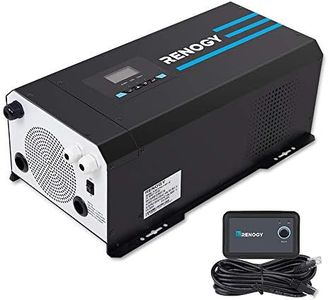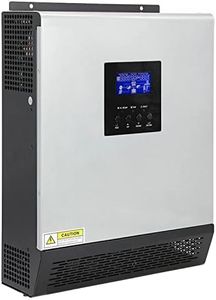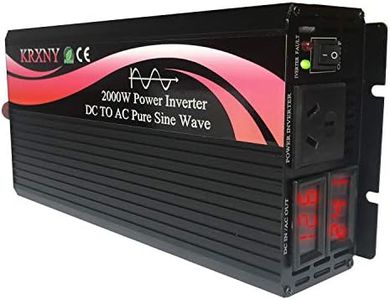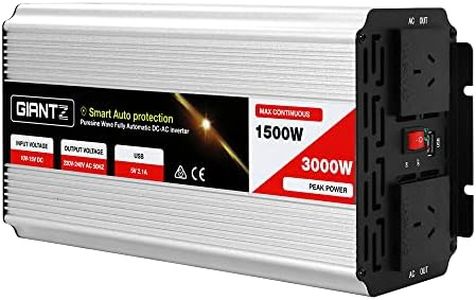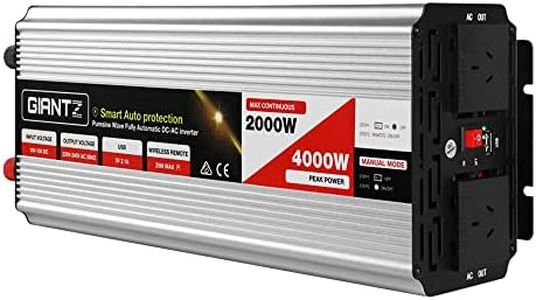We Use CookiesWe use cookies to enhance the security, performance,
functionality and for analytical and promotional activities. By continuing to browse this site you
are agreeing to our privacy policy
7 Best Hybrid Inverters
From leading brands and best sellers available on the web.Buying Guide for the Best Hybrid Inverters
Choosing a hybrid inverter is a smart step if you're considering or already own a solar power system, especially if you want to add battery storage. Hybrid inverters manage both solar panel input and battery charging, helping you maximize self-generated energy, secure backup power during outages, and sometimes even save money by using stored energy during peak hours. To get the right hybrid inverter, it’s helpful to understand the key specifications that influence its performance and how they relate to your unique needs.Power Output (kW)Power output tells you the maximum amount of electricity the hybrid inverter can supply to your home at any one time. This is measured in kilowatts (kW). If your household or business typically uses a lot of energy at once (like running several appliances simultaneously), you’ll need a higher power output. Small households may be fine with inverters up to 3kW, medium-sized homes may need something in the 5-7kW range, and larger homes or businesses could require 10kW or more. To choose the right value, think about your peak energy consumption and whether you plan to expand your system later.
Battery CompatibilityBattery compatibility refers to which types or brands of batteries you can pair with the inverter. Some hybrid inverters only work with specific batteries or technologies (like lithium-ion), while others are more universal. This spec is important if you have existing batteries or want flexibility for future upgrades. To pick the right option, check that the inverter supports your preferred battery type—whether you prioritize performance, lifespan, or cost.
Number of MPPTsMPPT stands for Maximum Power Point Tracker, which helps your system harvest the most energy from your solar panels regardless of varying sunlight conditions. More MPPTs allow you to connect separate solar panel groups with different orientations or shading. Single MPPT inverters are fine for simple, unshaded installations, but if you have panels on multiple roof sections or potential shading, choosing an inverter with two or more MPPTs will increase efficiency and flexibility.
Grid Interaction/Backup CapabilityThis specification tells you whether the hybrid inverter can operate when the grid goes down and provide backup power to your home. Some inverters switch seamlessly to backup mode, while others cannot run without a working grid connection. If backup power is important to you, such as in areas prone to outages, be sure to choose a model with 'islanding' (off-grid) capability or built-in backup support.
EfficiencyInverter efficiency describes how much of the energy coming from your panels (or battery) is converted into usable electricity after losses in the conversion process, usually shown as a percentage. Higher efficiency means less wasted power, which is always desirable, but most modern inverters fall within a small range (typically above 95%). For general use, an efficiency over 97% is considered excellent, but even a slightly lower value won’t make a dramatic difference over time for most users.
Monitoring and Connectivity FeaturesMonitoring features allow you to track your solar energy generation, battery usage, and sometimes even grid import/export via an app or web portal. Some inverters offer Wi-Fi, Bluetooth, or even Ethernet connectivity. This is important for staying informed and optimizing your energy use. If you like data or want to easily detect issues, choose a hybrid inverter with good monitoring and remote access options.
